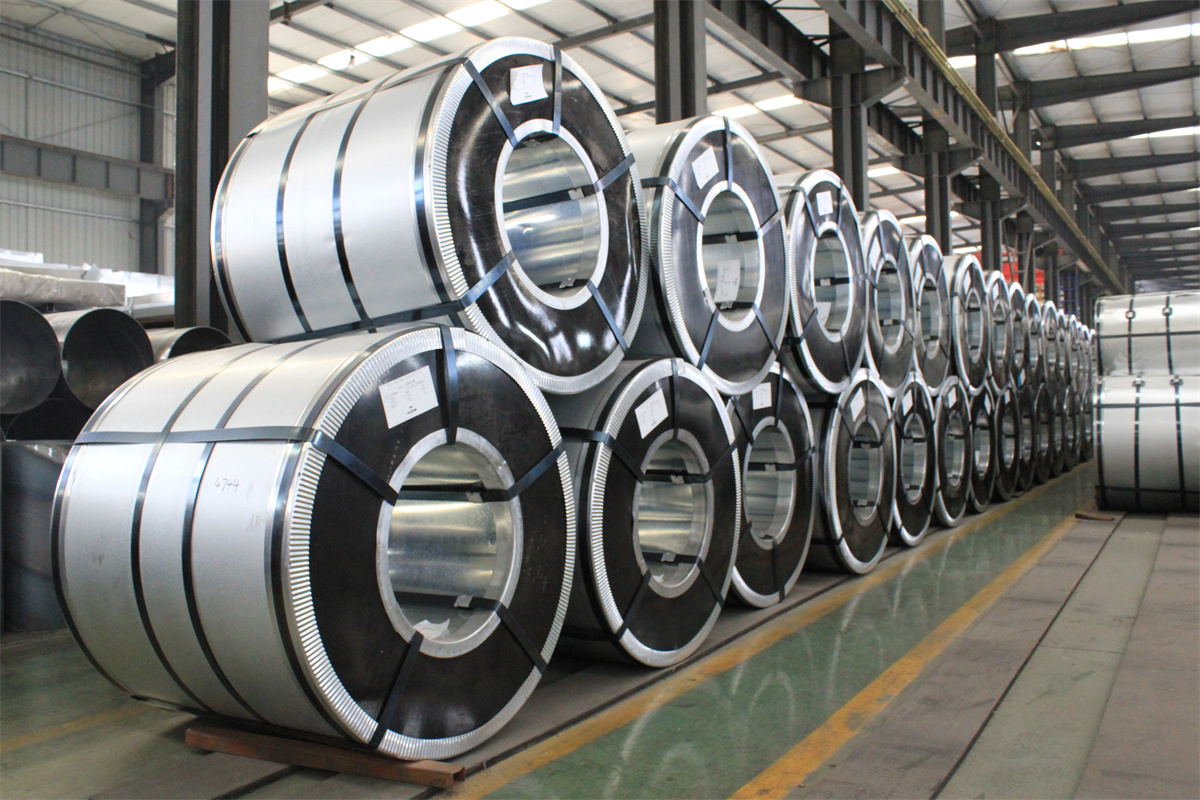
Introduction
In the ever-evolving landscape of manufacturing and construction, hot rolled steel coil stands out as a cornerstone material. Known for its versatility, strength, and cost-effectiveness, this form of steel is used in a wide range of industries, from automotive to construction. In this blog, we delve deep into the fascinating world of hot rolled steel coil, exploring its production process, benefits, applications, and much more.
What is Hot Rolled Steel Coil?
Hot rolled steel coil is a type of steel that has been rolled at high temperatures, typically over 1,700°F (926°C). This high-temperature process allows the steel to be easily shaped and formed, resulting in a product with a rough surface texture and a characteristic blue-gray finish. The steel is then coiled into large rolls for easy transportation and further processing.
The Production Process
1. Melting and Casting
The journey of hot rolled steel coil begins in the blast furnace, where raw materials like iron ore, coke, and limestone are melted down to form molten iron. This molten iron is then converted into steel through a process known as basic oxygen steelmaking (BOS) or electric arc furnace (EAF) steelmaking. This initial phase is crucial, as the quality of the raw materials and the efficiency of the melting process directly impact the quality of the final product.
2. Rolling
Once the steel is produced, it is cast into slabs. These slabs are then heated to high temperatures and passed through a series of rollers to achieve the desired thickness. The high temperature makes the steel more pliable, allowing it to be formed into wide sheets. The rolling process is meticulously controlled to ensure uniform thickness and consistency throughout the coil.
3. Coiling
After rolling, the steel is wound into coils while still hot. This coiling process helps in easy handling and transportation. The coils are then allowed to cool, resulting in a material with a rough surface finish and excellent mechanical properties. The cooling phase is critical as it solidifies the internal structure of the steel, ensuring its durability and strength.
Benefits of Hot Rolled Steel Coil
1. Cost-Effectiveness
Hot rolled steel coil is generally less expensive than cold rolled steel due to its simpler production process. This cost advantage makes it an attractive option for large-scale projects where budget constraints are a significant consideration. The lower production costs are passed on to consumers, making it accessible for a variety of applications.
2. Versatility
Hot rolled steel coil can be used in a wide range of applications, from construction beams and automotive components to machinery and equipment. Its malleability at high temperatures allows for various shapes and sizes, making it an incredibly versatile material. This versatility enables manufacturers to meet diverse industry demands with a single material type.
3. Strength and Durability
The high-temperature rolling process enhances the steel’s strength and durability. This makes hot rolled steel coil ideal for structural applications where these properties are crucial. Its ability to withstand heavy loads and harsh conditions ensures long-lasting performance in demanding environments.
4. Ease of Forming
The pliability of hot rolled steel coil at high temperatures makes it easier to form into various shapes and sizes. This ease of forming reduces manufacturing time and costs, contributing to the material’s overall cost-effectiveness. The ability to quickly and efficiently produce desired shapes is a significant advantage in large-scale manufacturing.
5. Scalability
Hot rolled steel coil is available in a wide range of thicknesses and widths, allowing for scalability in various applications. Whether you need a thin sheet for automotive panels or a thick slab for construction beams, hot rolled steel coil can meet your requirements. This scalability makes it suitable for both small-scale projects and large industrial applications.
Applications of Hot Rolled Steel Coil
1. Construction
In the construction industry, hot rolled steel coil is used in the creation of I-beams, H-beams, channels, and angles. Its strength and durability make it ideal for structural applications, ensuring the stability and longevity of buildings and infrastructure. The ability to withstand heavy loads and harsh environmental conditions makes it a preferred choice for construction projects.
2. Automotive
The automotive industry relies heavily on hot rolled steel coil for manufacturing various components, including chassis, frames, and wheels. Its excellent formability and strength make it perfect for applications that require high-performance materials. The automotive sector benefits from the material’s ability to be shaped into complex forms while maintaining structural integrity.
3. Machinery and Equipment
Hot rolled steel coil is also used in the production of machinery and equipment. From agricultural machinery to industrial machines, this material provides the necessary strength and durability to ensure long-lasting performance. The robustness of hot rolled steel coil makes it suitable for machinery that operates under high stress and demanding conditions.
4. Pipe and Tubing
The oil and gas industry utilizes hot rolled steel coil for the production of pipes and tubing. Its ability to withstand high pressure and harsh environments makes it an ideal choice for these applications. The reliability of hot rolled steel coil ensures safe and efficient transport of fluids and gases over long distances.
5. Railways
Hot rolled steel coil is used in the manufacturing of railway tracks and other components. Its strength and durability ensure the safe and efficient operation of trains, contributing to the overall reliability of the railway system. The material’s resistance to wear and tear makes it suitable for the demanding conditions of railway operations.
Comparing Hot Rolled and Cold Rolled Steel
To better understand the advantages of hot rolled steel coil, let’s compare it with cold rolled steel in terms of key properties:
| Property | Hot Rolled Steel Coil | Cold Rolled Steel Coil |
|---|---|---|
| Production Temperature | High (over 1,700°F / 926°C) | Low (room temperature) |
| Surface Finish | Rough, blue-gray texture | Smooth, polished finish |
| Cost | Generally lower | Generally higher |
| Formability | High (easier to form) | Lower (more difficult to form) |
| Strength | Strong, durable | Higher tensile strength, but less malleable |
| Applications | Construction, automotive, machinery | Appliances, precision components |
Frequently Asked Questions (FAQ)
Q1: What are the primary differences between hot rolled steel coil and cold rolled steel coil?
A1: The primary differences lie in the production process and properties. Hot rolled steel coil is rolled at high temperatures, resulting in a rough surface finish and excellent formability. Cold rolled steel coil, on the other hand, is rolled at room temperature, providing a smooth, polished finish and higher tensile strength. However, cold rolled steel is less malleable compared to hot rolled steel.
Q2: Can hot rolled steel coil be used in precision applications?
A2: While hot rolled steel coil is known for its strength and formability, it is not typically used in precision applications due to its rough surface finish. For applications requiring a smooth, polished finish and higher dimensional accuracy, cold rolled steel coil is usually preferred.
Q3: How does the surface finish of hot rolled steel coil affect its applications?
A3: The rough surface finish of hot rolled steel coil makes it ideal for structural and high-strength applications where surface appearance is not a critical factor. However, for applications requiring a smooth and aesthetically pleasing finish, additional processing or the use of cold rolled steel may be necessary.
Q4: What are the environmental impacts of producing hot rolled steel coil?
A4: The production of hot rolled steel coil is energy-intensive, contributing to greenhouse gas emissions. However, advancements in technology, such as the use of electric arc furnaces and improved energy efficiency, are helping to reduce the environmental impact. Additionally, steel is highly recyclable, contributing to its sustainability.
Q5: What future trends can we expect in the hot rolled steel coil industry?
A5: The future of the hot rolled steel coil industry looks promising with continued innovations aimed at improving performance and sustainability. Trends include the development of higher strength steel grades, enhanced formability, and the incorporation of advanced coatings for better corrosion resistance. Additionally, efforts are being made to reduce the environmental footprint of steel production through more efficient processes and the use of renewable energy sources.






